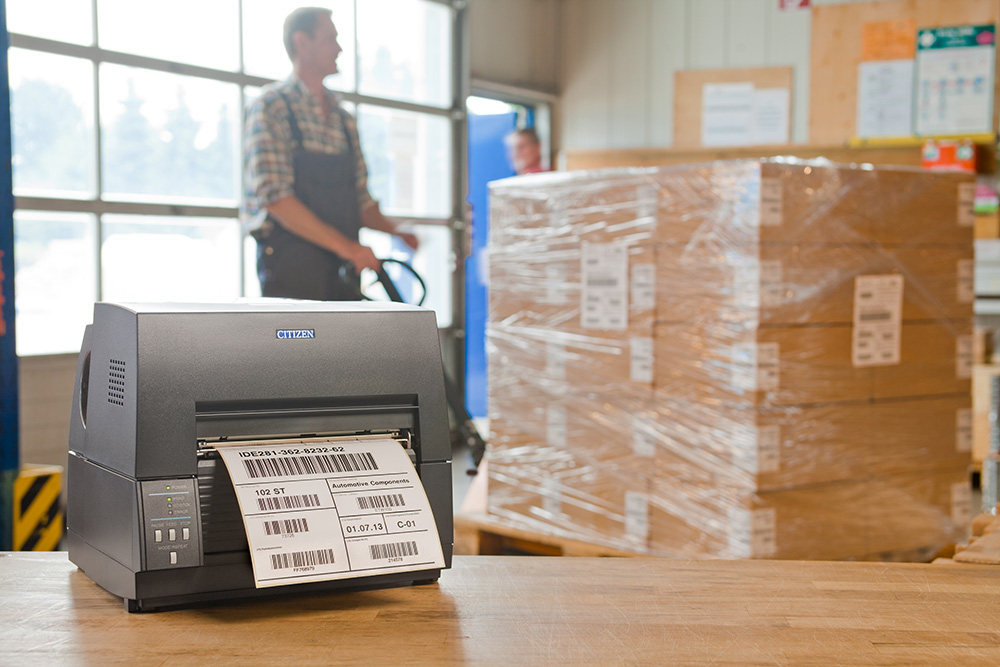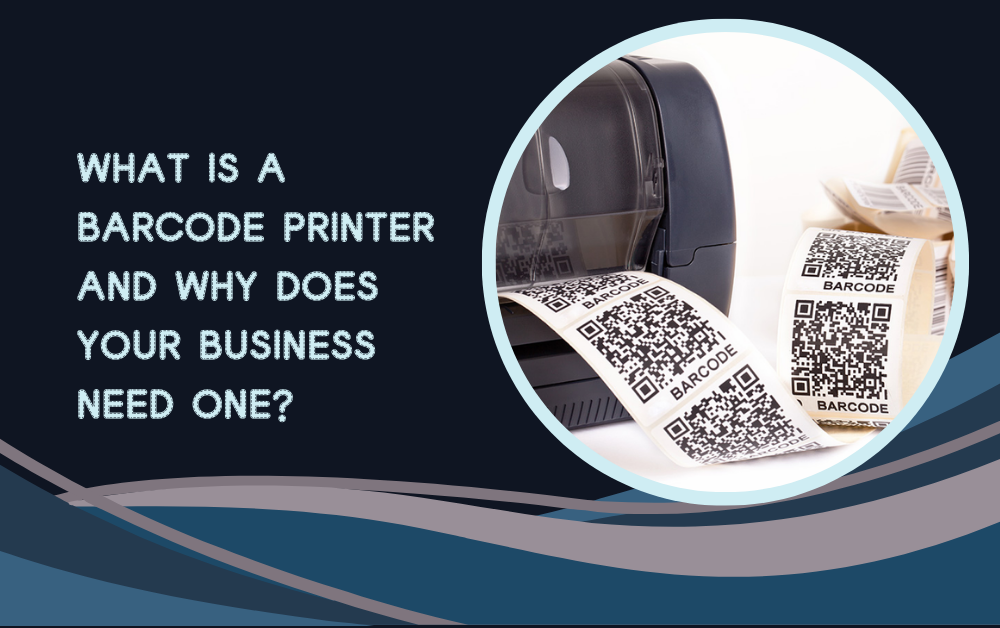In today’s fast-paced business world, efficiency and accuracy are key to success. Businesses, both large and small, rely on technology to simplify processes and enhance operations. One such technology is the barcode printer. This blog will explain what a barcode printer is, how it works, its benefits, and why your business needs one to stay competitive.

What Is a Barcode Printer?
A barcode printer is a specialized device designed to print barcodes, which are machine-readable codes made up of parallel lines and numbers. These codes store essential information about a product, such as its price, manufacturing date, and inventory details. Barcode printers are commonly used in industries like retail, healthcare, logistics, and manufacturing.
How Does a Barcode Printer Work?
Barcode printers use two primary printing methods:
- Direct Thermal Printing: This method uses heat-sensitive paper. When heat is applied, it creates the barcode directly on the paper without ink or ribbons. It is cost-effective but not suitable for long-term use, as the prints can fade over time.
- Thermal Transfer Printing: This method uses a ribbon and transfers ink onto the label to create durable and long-lasting barcodes.
Both methods are reliable and cater to different business needs, depending on the industry and usage.
Why Does Your Business Need a Barcode Printer?
Investing in a barcode printer offers many benefits that can streamline your business operations. Here’s why your business should consider one:
1. Improved Inventory Management
Barcode printers make inventory management efficient. Each product can be tagged with a barcode, allowing staff to track items accurately. This minimizes human error and ensures your stock levels are always up to date.
2. Enhanced Operational Efficiency
Barcode systems reduce the time it takes to complete tasks such as checking out items or managing warehouse goods. With a barcode printer, businesses can generate labels on-demand and avoid delays in labeling or tracking.
3. Cost Savings
Manual tracking methods often lead to errors, which can be costly. Barcode printers eliminate such mistakes, saving money by reducing the risk of incorrect data entry or misplaced inventory.
4. Better Customer Experience
Quickly scanning barcodes during checkout leads to shorter waiting times for customers. Additionally, accurate inventory management ensures that customers can always find what they are looking for.
5. Compliance with Industry Standards
Many industries require businesses to follow labeling standards. Barcode printers help you meet these standards by providing high-quality and compliant labels.
Types of Barcode Printers
There are various types of barcode printers, each suited to different needs:
1. Desktop Barcode Printers
These are compact and ideal for small businesses or offices with low to medium printing needs. They are commonly used in retail stores and healthcare facilities.
2. Industrial Barcode Printers
Designed for heavy-duty use, these printers are robust and handle high-volume printing. They are perfect for warehouses, manufacturing plants, and logistics companies.
3. Mobile Barcode Printers
These portable printers are lightweight and easy to carry. They are useful for on-the-go labeling, especially in industries like logistics and field services.
4. Color Barcode Printers
If your business needs colorful barcodes or labels, these printers can create vibrant and detailed prints. They are often used for branding purposes.
NOTE:- If you’re ready to take your business operations to the next level, consider investing in a barcode printer. Whether you need assistance choosing the right printer or want to explore the best options available, contact Labels and Labeling today. Their experts can guide you in finding the perfect solution for your business needs. Don’t wait—make your business smarter and more efficient with a reliable barcode printer.
How to Choose the Right Barcode Printer for Your Business?
Selecting the right barcode printer depends on your business requirements. Here are some factors to consider:
- Printing Volume: If you need to print a large number of labels daily, opt for an industrial barcode printer. For smaller volumes, a desktop printer may suffice.
- Label Durability: For long-lasting labels, choose a thermal transfer printer. If your labels are for short-term use, a direct thermal printer is a cost-effective choice.
- Portability Needs: If your business operates on the move, mobile barcode printers are ideal.
- Connectivity Options: Ensure the printer supports connectivity options like USB, Ethernet, or Wi-Fi for seamless integration into your systems.
- Budget: Choose a printer that meets your needs without overspending. While quality is crucial, there are affordable options that provide excellent performance.
Steps to Use a Barcode Printer
Using a barcode printer is straightforward:
- Install the Software: Most barcode printers come with user-friendly software to design and print labels.
- Connect the Printer: Plug the printer into your computer or network.
- Load the Labels: Insert the label roll or sheets into the printer.
- Customize Your Labels: Use the software to add details like text, barcodes, or images.
- Print the Labels: Once designed, hit print, and your barcode labels are ready for use.
Applications of Barcode Printers
Barcode printers are versatile and can be used in various industries:
- Retail: For pricing and inventory tracking.
- Healthcare: For labeling patient records, medications, and equipment.
- Logistics: For shipment tracking and warehouse management.
- Manufacturing: For product labeling and tracking assembly lines.
- Hospitality: For event tickets and visitor management.
Tips for Maintaining Your Barcode Printer
To ensure your barcode printer works efficiently, follow these maintenance tips:
- Clean the Printer Regularly: Dust and debris can affect the print quality. Use a soft cloth to clean it periodically.
- Use High-Quality Labels and Ribbons: Low-quality materials can damage the printer’s print head.
- Update the Software: Keep the printer software up to date for better performance.
- Check the Print Head: Regularly inspect the print head for wear and tear, and replace it when necessary.
- Store in a Safe Environment: Avoid placing the printer in areas with extreme heat, humidity, or dust.
Conclusion
A barcode printer is a valuable tool for any business aiming to improve efficiency and accuracy. Whether it’s managing inventory, reducing human error, or enhancing the customer experience, a barcode printer can streamline various processes. With the right barcode printer, your business can stay organized, comply with industry standards, and save time and money.
For More Insightful Articles Related To This Topic, Feel Free To Visit: caringhandsvet.com







Leave A Comment